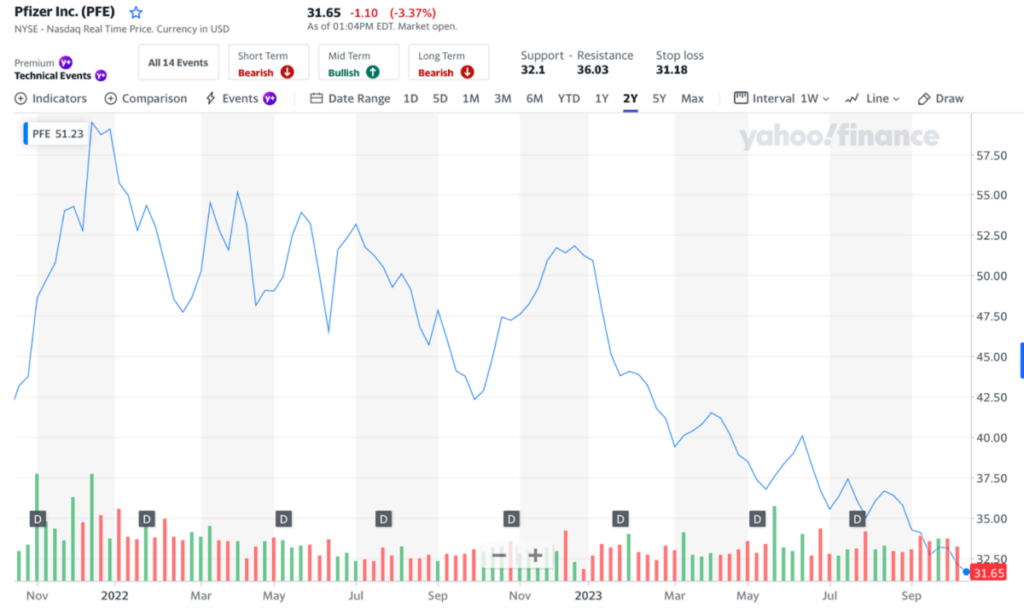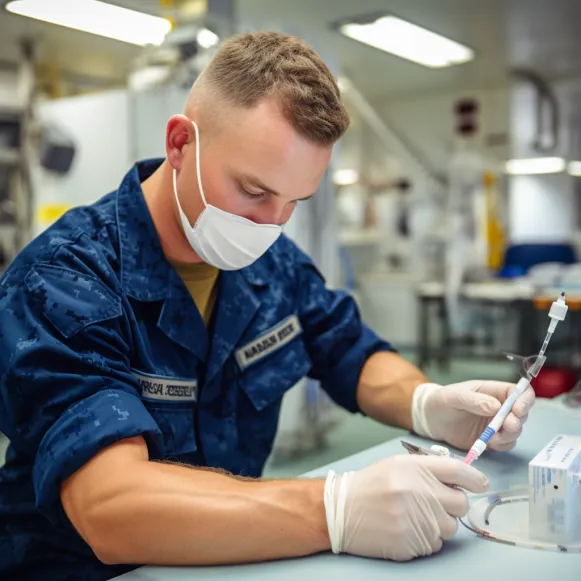The Decline and Near Fall of the COVID Vaccine Makers

Commentary
The latest version of the COVID vaccines, which received almost no testing but were still approved by regulators, have been far less popular than expected. The CDC does not publish real-time data, but what we know so far suggests that it is in the 2% range.
This is extremely low. The most pessimistic forecast I had heard was 5%. By any standard, this is a colossal failure. That is precisely why the figures are not publicized. The average person no longer purchases what they are selling.
Initially, the excuse was that drug stores were experiencing logistical difficulties. Then it was widely assumed that they were prohibitively expensive. Such diversions dominated the messaging for a few weeks. But, in the end, the reality is that people simply do not want them.
Now we understand why the mandate pushers were so determined to get mandates wherever and whenever they could. The creators have always claimed that the shots were safe and effective, but this ignores a more fundamental question: were they necessary?
The demographics of COVID risk have been published and have remained unchanged since February 2020, more than a year before the shots became widely available. Millions had already been exposed and developed immunity without the shots by that point.
From the start, the claims for what they called a vaccine were clearly exaggerated. By the time they were released, a large number of people had figured it out.
The Biden administration was advised early on that 70 percent uptake was required to end the pandemic, which is consistent with the pharmaceutical target for herd immunity. However, that goal assumes the absence of natural immunity, which the ruling class pretended did not exist or that there was insufficient evidence to rely on at the time.
When that number failed to stop the spread, the Biden White House increased the target from 70% to 85% to 90% for everyone. Finally, they claimed that the only reason COVID was still present was because of the unvaccinated, which most experts knew was false, but the needs of industry at the time overrode all science.
Johnson & Johnson, a more traditional vaccine that required only one shot, was the main competitor to Pfizer’s and Moderna’s two mRNA shots. However, the Food and Drug Administration (FDA) temporarily withdrawn it for safety concerns in 2021, destroying its market share and leaving only two giants to reap the fiduciary rewards of public panic.
Keep in mind that these vaccines were developed with public funds. Patents were granted to the companies. Briefly, the Biden administration considered giving away the formulas so that anyone could make them, but that idea quickly died due to panicked industry protests. Then they used mandates, which are a type of conscription. Furthermore, they were protected from harm. Finally, because they are publicly traded companies, they can reap the windfall of profits, which they did.
What is the stock price of Pfizer and Moderna after three years? In two years, Moderna has lost 74% of its value, while Pfizer has lost 46%. There is no doubt that the time to sell these stocks was two years ago. Layoffs have already begun, and their valuation will most likely return to where it was two years ago.


When big shots die, there’s a temptation to cheer, and I understand that. Nothing, however, can undo the tremendously terrible history of these shots: the expense, coercion, harms, and wealth transfer associated with them.
All of this is to say that they will almost certainly get away with it.
I often reflect on what we knew about coronaviruses in the beginning. These viruses are typically unstable and prone to constant mutation. They are not viable vaccine candidates. Pharmaceuticals, at best, can track down the last variant and provide some therapeutic benefit. They are not like polio, measles, rubella, or smallpox, which are all stable viruses against which vaccines have been available for a long time.
Again, this is not newly discovered wisdom. It was and has been widely known for many decades. It could be found in any medical textbook. It was even taught in 9th grade biology class a generation or two ago.
For some strange reason, by 2020, enough people had forgotten or never learned that bad actors were capable of duping the public into believing that a magic shot could cure a respiratory virus. We were never going to be able to vaccinate our way out of this one. Never.
In terms of the vaccine’s safety and efficacy, I can only quote Tracy Heg: “There was thus no informed consent and, as stated, safety and efficacy were almost entirely unknown when the vaccine was administered to the public.”
Meanwhile, the FDA had a strong vaccine team that resigned when they saw what was going to happen with the first booster and how the manufacturers were essentially buying their way into the approval process. Those who remain, it is widely acknowledged, are completely dependent on the industry.
Will they get away with it all? Certainly, the public and financial markets are in a punishing mode right now. It’s all about timing. It’s unclear about broader accountability. We had investigations underway and some focus on Capitol Hill, but all of that may be put on hold now, given the intense focus on the Middle East conflict. War has a tendency to put everything else on hold.
There is no doubt that reforms are desperately needed, particularly with regard to regulatory capture and harm indemnification. The 1986 act (National Childhood Vaccine Injury Act [NCVIA]) that protects vaccine manufacturers from harm must be repealed immediately. This will restore a sense of reality to these markets.
And steps must be taken to restore the FDA’s integrity and science. That is only the beginning.
At the start of this whole mess, I assumed that the vaccine would be a great distraction from the need for good protocols for dealing with the sick, thinking and writing not as an expert but as a literate human being. It proved to be far more than a distraction. Many people were injured, and many died. The entire saga has cast widespread doubt on all vaccines, pharmaceuticals, medical services, and public health in general.
This means that, even if serious reform efforts are made, the public may refuse to go along with it any longer. Public health in the United States and around the world squandered decades of goodwill and reputational capital on an unworkable project that was never necessary for the vast majority of people. We are now stuck with the consequences.
Given all of this, a lower stock valuation for the main two vaccine distributors is a pittance.
The views expressed in this article are the author’s and do not necessarily reflect those of The Epoch Times.






